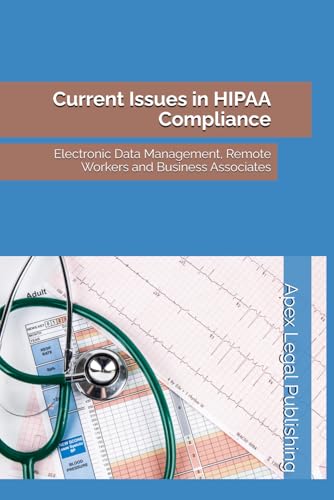In recent years HIPAA compliance requirements have seen huge changes in data storage and management and communications and interaction with remote workers and business associates. As a result, many covered entities are relying on compliance programs and systems that are inadequate or out-of-date.
Derived entirely and directly from government regulations and guidance publications, this easy-to-follow guide introduces and explains all essential concepts necessary for an understanding of what is required to bring an organization into compliance with recent developments and current issues in the complex and often confusing regulatory framework governing medical records and information.
HIPAA compliance is mandatory for organizations where personal medical information is handled, and penalties for non-compliance can be devastating.
Covering all essential elements of the regulations and best practices necessary for compliance in handling electronic data, remote workers and Business Associates, this guide provides the information you must have, along with a glossary of essential terms and phrases and a list of additional resources which can help bring you into full compliance without unnecessary expense or time and effort.
Partial List of Key Topics:- Electronic Transaction Standards
- Code Sets & Unique identifiers
- “PHI” Defined
- Entities Required to Protect PHI
- De-identification of Protected Health Information
- The Difference Between PHI and ePHI
- Technical Safeguards
- Physical Safeguards
- Administrative Safeguards
- Information Access Management
- Security Awareness and Training
- Security Incident Procedures
- Business Associate Agreements and Other Arrangements
- Secure Communications and HIPAA Compliance
- HIPAA-Compliant IT Systems and Electronic Communications
- Data Backup and Disaster Recovery Plans
- Secure Data Management Practices for Remote Workers
- Tools and Technologies for Secure Remote Data Management
- Implementing BYOD Policies and Procedures
- HIPAA Business Associate Agreements
- Best Practices for Achieving HIPAA Compliance
